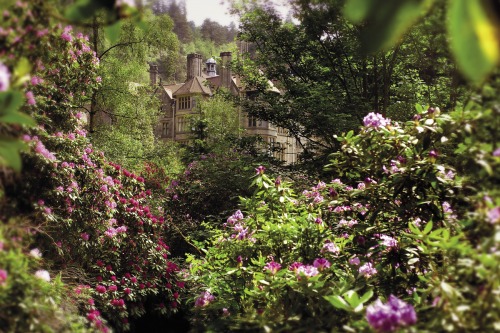How to Make and Grow Your Own Mistletoe
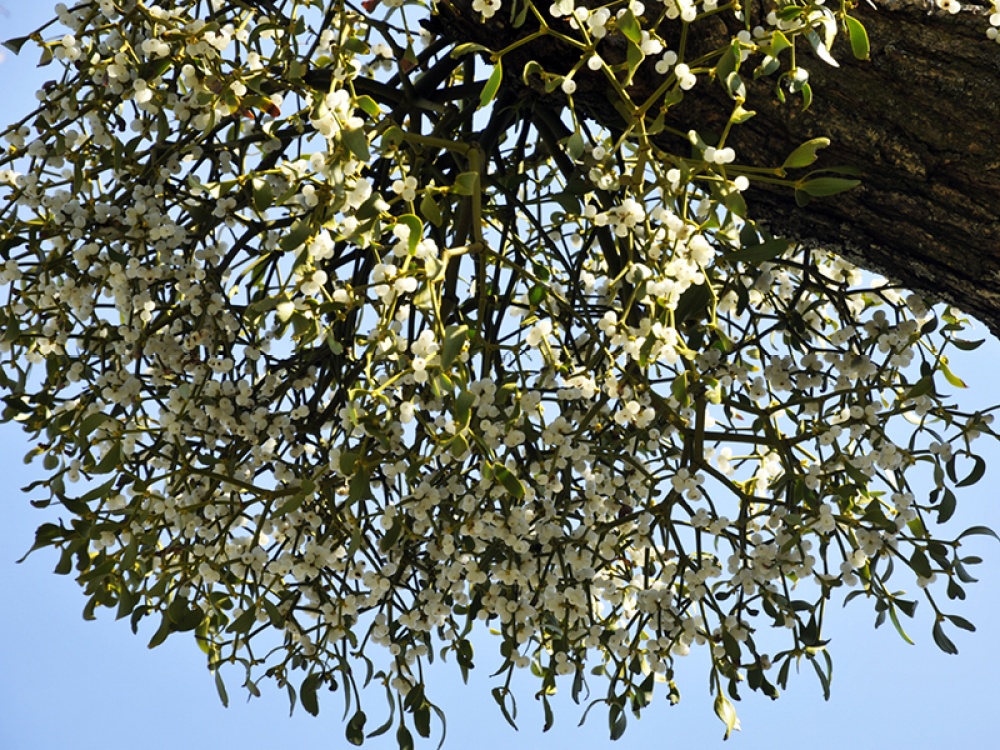
Many are the legends which surround this symbol of the festive season
The plant’s association with fertility continued through the Middle Ages and by the 18th century mistletoe was widely incorporated into Christmas decorations. Today, it is most often used to elicit a Christmas kiss, although its name is derived from two Anglo-Saxon words: mistle, which means dung, and tan which means stick or twig. ‘Poo on a stick’ is hardly the most romantic connotation.
Just how mistletoe made the leap from warding off evils spirits to becoming a popular Christmas decoration is not clear, but some historians say that the kissing tradition seems to have been elicited by household servants below stairs before being adopted more generally. The original custom has it that a berry must be picked from the sprig of mistletoe before the person underneath could be kissed. When all the berries had gone there would be no more kissing! To refuse a kiss was also deemed bad luck.
‘By the 18th century mistletoe was widely incorporated
into Christmas decorations. Today, it is most often
used to elicit a Christmas kiss’
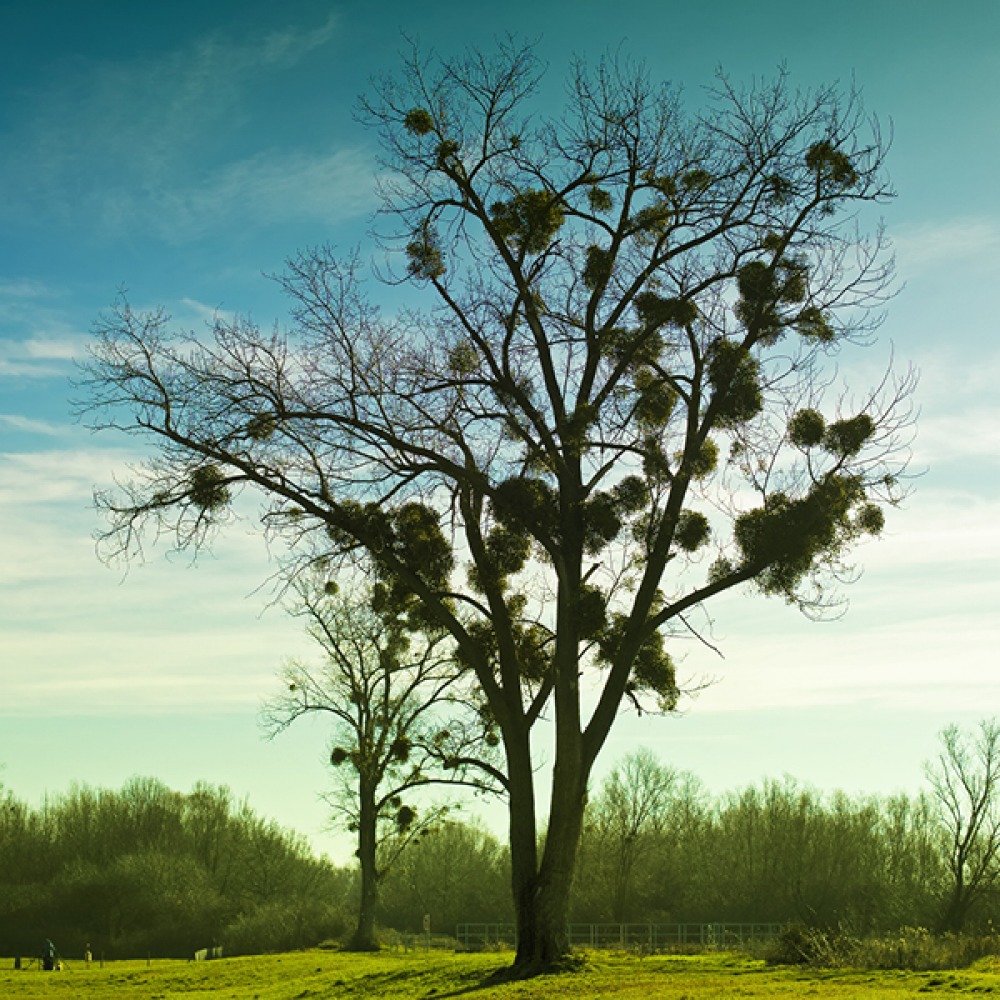
The association with kissing could also be partly due to the fact that before Christmas trees became popular in Victorian times, a common form of Christmas decoration was the Kissing Bough. Made of five wooden hoops that made the shape of a ball, the hoops were covered with holly, ivy, rosemary, bay, fir or other evergreens. Inside the hoops were hung red apples (often hung from red ribbons) and a candle was usually placed inside too, but the final flourish was the addition of a large bunch of magical mistletoe hanging from the bottom.
Other stories surrounding mistletoe and associated kissing traditions relate to Norse legend, and the fertility aspect of the evergreen mistletoe growing on a bare host tree during winter. The fertility imagery is further enhanced by the mistletoe’s shape – the forking paired branches, paired leaves and berries hinting at sexual organs.
With its white berries and perfectly paired leaves, there are in fact around 1,000 sub-tropical species of mistletoe that grow worldwide, but Viscum album is the only one native to Britain. Often appearing as giant green baubles in the bare branches of wintering trees, it is most commonly found on apple trees and is a vital source of food for birds and insects. But mistletoe itself is a hemiparasite, dispersed by the feeding birds, and if allowed to grow unchecked it can severely damage its host by hijacking water and minerals from the branches.
Despite being tree-loving, mistletoe is not a woodland plant, preferring individual trees in open ground with plenty of light, so favourite habitats include orchards and churchyards rather than dense woodland or forests. Mistletoe’s favourite host trees are apple trees, but it is also partial to poplars, limes and hawthorns.
Sadly, it seems mistletoe is becoming rarer in the north, thanks largely due to the decline in the number of apple orchards but it still remains prevalent in the south west midlands and in some gardens and open parkland.
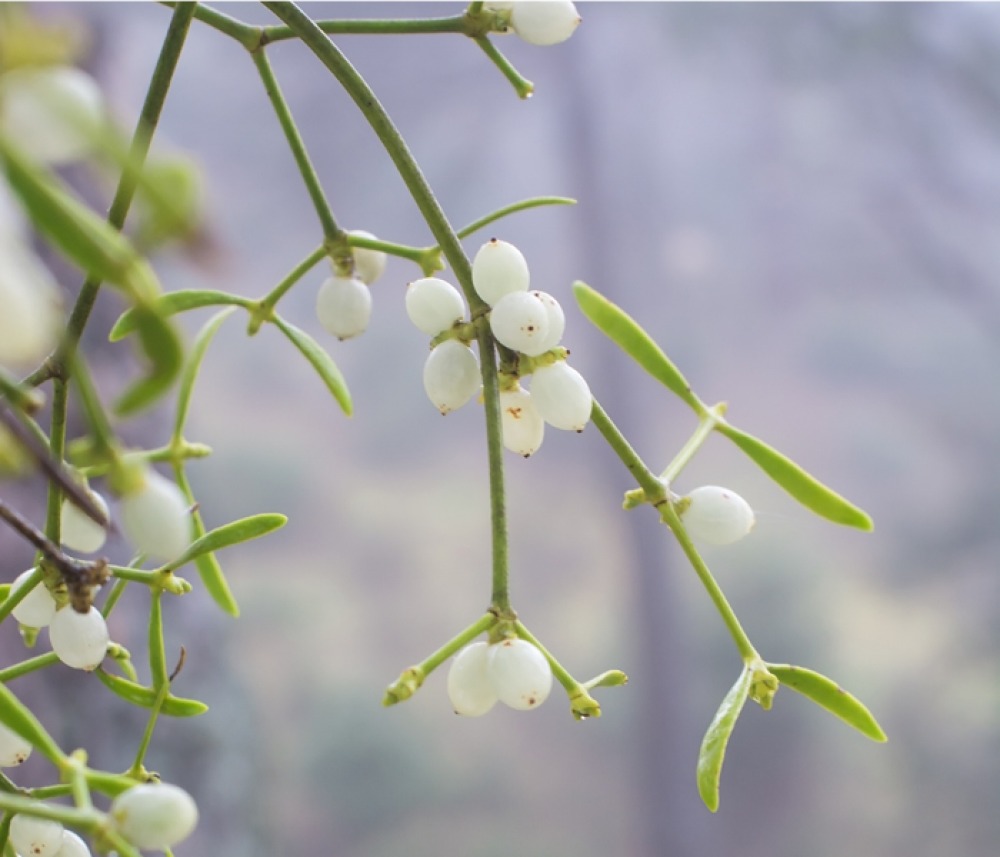
How to Grown Your Own Mistletoe
• Plant mistletoe seeds on the bark of a host tree between late January and March, but you’ll need some patience. It takes a while for them to establish themselves. You can keep Christmas berries fresh by detaching them and leaving them in a cool place, but not in the dark and never in the fridge.
• For best results use fresh berries. If the berries have been stored, rehydrate them for a few hours in a little water. Whether fresh or stored, the seed needs to be squeezed out of the berry – you’ll find they come out enclosed in a ball of sticky jelly-like viscin. Collect several of these sticky seeds on your fingers. You’ll find they stick onto you rather well, and this is a convenient place to keep them whilst planting on the tree. Try to remove as much of the jelly-like gluey stuff as possible, as the seeds seem to germinate better when fairly clean, and will still stick on perfectly well with only a little glue remaining. Seeds do not need to be cut into the bark or pushed under the bark which is actually counterproductive as they need a healthy intact host bark to reproduce.
• Choose a compatible host tree, bearing in mind mistletoe’s preference of apple first, then poplars, lime and hawthorn, and trees with plenty of light and space around them. Avoid older branches and the trunk as they are more difficult for the mistletoe to germinate successfully.
• Seeds need light to germinate and male and female seeds are also needed for fertilisation, so plant five or more seeds on every branch.
• Leave the host tree for a minimum of 18 months without pruning.
• Expect to harvest a small amount of mistletoe within four years. After eight or ten there should be a sizeable clump or ball.
• When decorating with mistletoe you will need at least three kilos for decorating a family home!
• Why not send friends and family a special sprig of fresh mistletoe instead of a Christmas card? During World War I mistletoe was seen as a sign of peace and used extensively as decoration, and appeared on many of the Christmas cards produced at that time.
Read More: Gifts to Get Gardeners This Christmas
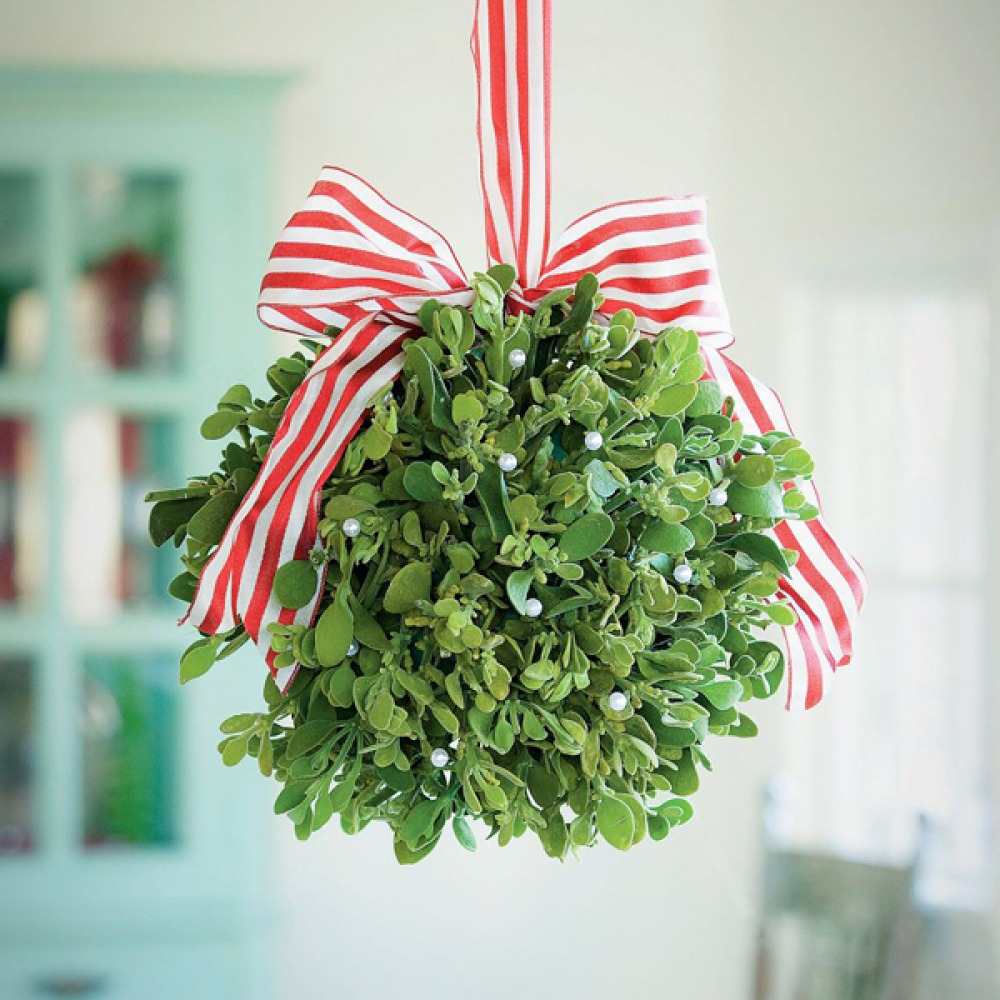
Make Your Own Mistletoe Ball
One 4 or 5 inch florist foam ball
Florist’s wire
Garden shears
Moss
20 to 30 branches of mistletoe
• Soak the ball in water. Submerge it for 15 minutes until saturated.
• Cut floral wire into 1 ½-inch strips. Bend pieces into a U-shape.
• Cover the ball with moss. Secure it with the floral wire.
• Cut mistletoe into 2- to 3-inch pieces. Push the stems through the moss and directly into the foam ball.
• Starting at one end of the ribbon, fold a 10-inch loop (this will be what you use to hang the ball), and then two 8-inch loops. This will leave you with a 12-inch tail. Cut 6 inches off the tail and lay on opposite side of loops. Pinch the loops and tail together at the centre and secure with a 16-inch piece of wire bent in half. Firmly twist the wire until you create a stem sturdy enough to insert in mistletoe ball.






